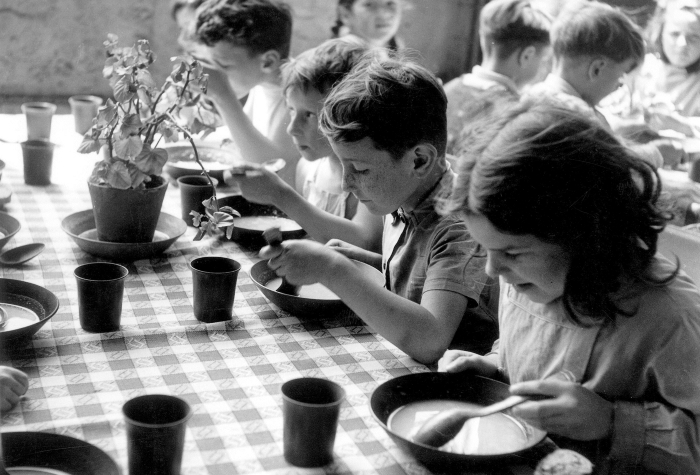Wine is a beautiful beverage. Astonishingly, fermented grape juice can be incredibly complex, sophisticated and alluring. Wine is noble like that — it offers limitless enjoyment! Still, like any food and beverage, wine has a shelf-life, and like any other food, wine sometimes goes bad. We are going to present you the main wine faults !
Faulty wine is not nearly as common as everyone thinks, but every wine lover occasionally runs into a defective bottle. The question is. Are you able to detect faulty wine? Most importantly, could you explain to your guests what’s wrong with the wine? Here’s all you need to know about the primary faults in wine, their causes and how to spot them.
Wine’s Notorious Enemies
Oxygen, heat and light are wine’s deadliest enemies. Most faulty wines were victims of one of these usual suspects. Oxygen damages the wine by oxidizing it, changing its color, aroma and flavor. Heat can literally cook the wine, ruining its bouquet, and light can break down the complex aromatic molecules in the precious fermented beverage.
Spotting wine faults is one thing but preventing them in your home is just as important! Before we discuss the most common faults in wine, ensure your wine bottles are stored in a dark place away from heat or light sources.
1. Oxidation
The traditional cork that tops almost every wine bottle protects the liquid inside from oxygen. When in contact with air, the wine starts to oxidize, and you can notice the oxidation in a matter of minutes. Of course, after a few days, weeks or months, oxygen changes the wine’s flavor and aromatic profile entirely, ruining it for good.
How to Detect Oxidation in Wine?
Oxidized wine is easy to spot by just looking at it. Pale, golden wines turn bright yellow, and ruby-red wines turn brown. Oxidation also damages wine’s most delicate fruit scents, so the wine might not taste fruity at all, but a bit rancid or vinegary. You can’t fix an oxidized wine.
2. Vinegar Taint – Volatile Acidity

We all love a tart salad dressing, especially when made with balsamic. It turns out that all wine eventually becomes vinegar, and it’s because of alcohol-consuming “acetic” bacteria that turn the wine into vinegar. Interestingly, acetic bacteria can only thrive when in contact with air. Oxidized wine is eventually tainted with vinegar, otherwise known as volatile acidity.
Old wine will show both oxidation and vinegar taint, but they’re not always considered faulty. Several well-aged Italian wines, for example, are expected to be vinegary.
How to Detect Vinegar Taint in Wine?
Wine with volatile acidity will smell and taste like wine vinegar. Think of your favorite balsamic vinaigrette. There’s no way to fix wine with volatile acidity, but it is harmless — you can cook with it!
3. Cooked Wine
Wine is sensitive to heat, and that’s why wine cellars should always have a stable temperature between 10°C and 16°C (50°F- 60.8°F). The warmer the cellar, the faster the wine’s evolution and decay. Of course, no warm cellar will “cook” wine, but a few hours left in the car in summer will cook the wine and make it undrinkable.
How to Detect Cooked Wine?
Cooked wine might smell like over-ripe fruit, cranberry sauce (not in a good way) or warm juice. If you cook with wine often, you might recognize a few aromas in the wine glass. There’s no way to fix a cooked wine.
4. Corked Wine

Corked wine used to be one of the most common wine faults, but it’s now rare. Contaminated corks are behind this wine fault, in which a compound known as TCA (Trichloroanisole) changes the wine’s aromas irreparably. With stricter quality controls by cork producers worldwide and screw caps, few contaminated corks reach the market, but cork taint is still a thing.
How to Detect Corked Wine?
Corked wine is stripped from its fruit scents, and they’re replaced by smells often described as a damp basement, wet cardboard, musty cloth or wet dog’s fur. There’s no way to remove cork taint from the wine.
5. Light-struck Wine
UV rays from the sun and artificial light can and will damage wine. That’s why most producers use brown or green bottles — they protect the wine from light to some extent. When the wine is light-struck, though, there’s nothing you can do. Light breaks down the most delicate aromatic compounds, often turning them into other (not so enjoyable) scents.
How to Detect Light-Struck Wine?
White wine is more susceptible to light, especially if bottled in a clear bottle. Wooly, musky or cabbage-like scents are common in light-struck wines. You can’t remove these smells from the wine.
6. Brett
Brett is an annoying wild-fermenting yeast that both wine and beer enthusiasts learn to love. When Brettanomyces yeast finds its way to wine, during or after fermentation, it produces its own set of aromas, which can be interesting for some and disgusting for others. Wild-fermented wine is becoming more popular, and it’s often known as natural wine. Well, wild-fermented wine is usually Bretty.
How to Detect Brett in Wine?
Brett produces “barnyard” scents of cattle, wet horse, sweaty saddles and old band-aids. When Brett aromas don’t dominate the nose, they add an interesting aromatic layer to the wine.
7. Sulfur
Sulfur dioxide, or SO2, is a common antiseptic and antioxidant in the world of wine. It is used both in the vineyard and the cellar, and winemakers will use it at several stages of the winemaking process. When abused, we can perceive these substances in the final product, which is not always nice. Making wine without sulfur, AKA sulfites is possible, but the wine is volatile and can be contaminated by other yeasts (Brett) and bacteria (acetic.)
How to Detect Sulfur in Wine?
Scents of matchstick and firecrackers are common in wines tainted with sulfur. Rubbery smells and cooked garlic are other common descriptors. Most of the time, decanting and aerating the wine can help dissipate these sulfury notes.
8. Re-Fermented Wine
Re-fermented or double-fermented wine is an awkward wine fault, especially for the winemaker. In this case, the wine was bottled anti-hygienically, sometimes with residual sugar and yeast, or contaminated by other microorganisms. The fungi and bacteria re-ferment the wine, often producing gas that pops the cork out.
How to Detect Re-Fermented Wine?
Don’t buy bottles of wine if their corks look like they were pushed out of place. Re-fermented wine can be sparkling when it’s supposed to be still, and it’s often contaminated with vinegar taint or Brett and might also be oxidized.
9. Bacterial Contamination
Sometimes microorganisms other than acetic bacteria and Brett find their way into your bottle of wine, or the wine was bottled from the start with these unexpected guests. Since millions of microorganisms can ruin wine, this wine fault is hard to describe. Still, although rare, wine damaged by bacterial contamination is easy to spot — it’s just too funky.
How to Detect Contaminated Wine?
Wine contaminated by bacteria can be cloudy or slightly fizzy, and it might also contain smells of animal fur, hay or damp clothes. The wine can be aggressively sour as well. You can’t fix contaminated wine.
How to Prevent Wine Faults?
Everyone involved in a wine bottle’s journey, from vineyard to wine glass, can play a part in preventing wine faults, including the consumer. Winemakers must ensure their equipment is sanitized, and the wine is produced, bottled and stored appropriately. Exporters, importers, wholesale suppliers and corner shop wine stores must keep the wine safe from heat, light and moisture.
At home, you must also ensure you keep your wine collection safe by storing it under the right conditions. You’d be surprised how frequently wine drinkers ruin their wine themselves! Of course, we all blame winemakers when we pour a faulty wine, but sometimes we’re responsible for the wine not showing its best.
Wine is a delicious beverage indeed, but it is also delicate. And although you can’t prevent opening a bottle of faulty wine now and then, at least you can source your wine from people that treat it gently. Treat it nice yourself as well!
There’s Good News; Your Wine is Probably Fine.
Although wine faults can be present in every wine style from any winery, they are now rare, provided your bottles of wine are well kept and handled adequately during their long journey from the winery to your doorstep.
Again, not all wine faults are deal-breakers either. Slight oxidation, vinegar and Brett are not only typical in certain traditional wine styles but also expected! What’s a wine fault for you might be a lovely bouquet for someone else. Of course, many wine faults ruin the wine irreparably.
The good news? A ruined bottle of wine is not a waste of your time or money. Ask any wine professional, and they’ll all agree they’ve learned more about wine when tasting faulty examples than from sipping on pristine wine. To become an expert wine taster, you’ll have to taste your fair share of faulty wine, and that’s okay!







